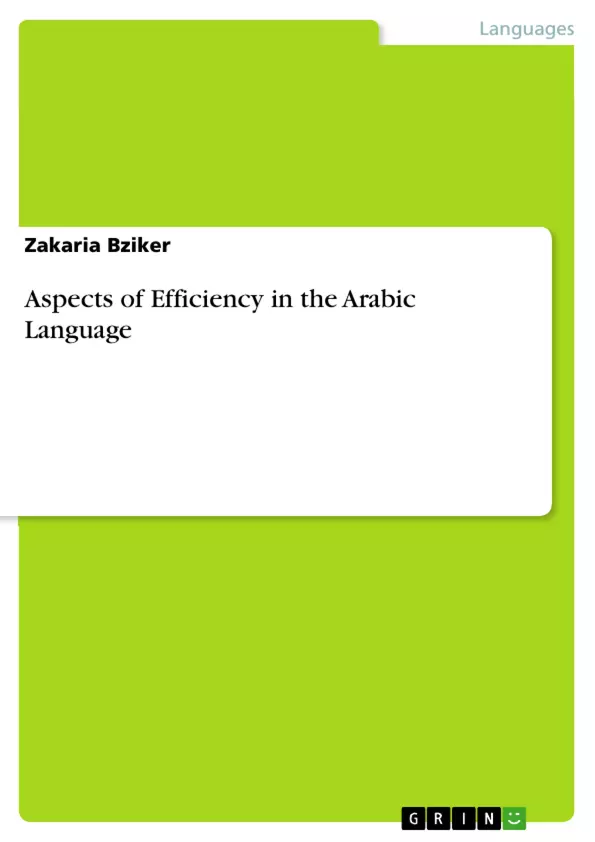Linguistics throughout the past century has established the idea that all languages are alike. This idea is well established among linguists with certain evidence presented by theoretical linguistics. The purpose of this paper is to challenge this established fact by providing some evidence in favor of the Arabic language as being, according to the author`s opinion, the closest to an efficient language. The evidence is mainly drawn from the morphology of the language.
The paper is divided into two major parts. The first part outlines all the possible criteria for a language to be efficient. The second part demonstrates how the Arabic language matches or satisfies the criteria mentioned in the first part.
Inhaltsverzeichnis (Table of Contents)
- Aspects Efficiency in the Arabic Language
- The Arabic Language
- The Building Blocks of Arabic
- Arabic Roots: A Mathematical Pattern
- The Age of Arabic
- Preserving Arabic's Features
- Arabic: A Language Resistant to Change
- The Arabic Dialect Continuum
- Arabic: A Unique Case
Zielsetzung und Themenschwerpunkte (Objectives and Key Themes)
This paper explores the concept of language efficiency and argues that an efficient language should be ancient, unchanged, economical, and simple. It then examines the Arabic language, analyzing its features and structure in light of these criteria.
- Language Efficiency and Its Defining Features
- The Special Features of the Arabic Language
- The Role of Structure and Simplicity in Language Efficiency
- The Age of Arabic and its Potential Significance
- The Resistance of Arabic to Change and its Impact on Communication
Zusammenfassung der Kapitel (Chapter Summaries)
- The paper begins by introducing the concept of language efficiency, arguing that a language that changes over time loses important features that contribute to clear and concise communication.
- The paper then examines the Arabic language, highlighting its unique features, such as its elegant word-root system and the mathematical patterns that govern its structure. These aspects are presented as evidence for the simplicity and efficiency of Arabic.
- The paper discusses the age of the Arabic language, drawing on historical, linguistic, and theological perspectives. It questions the common assumption that Arabic is a relatively recent language, proposing that it might have existed far earlier than generally acknowledged.
- The paper explores the mechanisms that contribute to Arabic's resistance to change, highlighting the unique features of its root system and its limited exposure to foreign languages. These factors, the paper argues, help to preserve the language's richness and integrity over time.
- The paper examines the Arabic dialect continuum, comparing it to the rapid change and diversification seen in other language families. This comparison suggests that Arabic undergoes a slower rate of change, preserving a high level of mutual intelligibility across its various dialects.
Schlüsselwörter (Keywords)
The primary keywords and focus topics of this text include language efficiency, Arabic language, simplicity, word-roots, language change, dialect continuum, ancient languages, and linguistic structure.
- Quote paper
- Zakaria Bziker (Author), 2020, Aspects of Efficiency in the Arabic Language, Munich, GRIN Verlag, https://www.grin.com/document/942141



